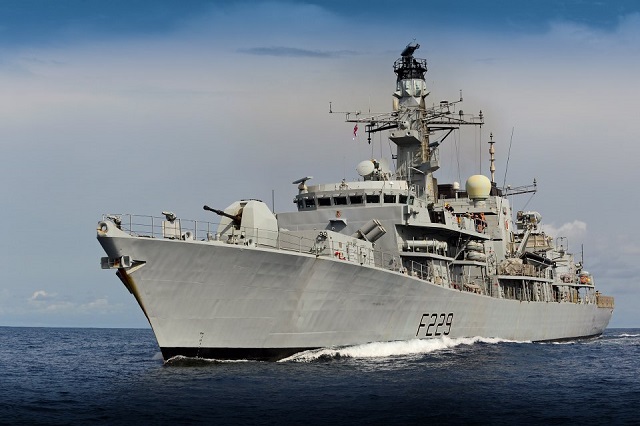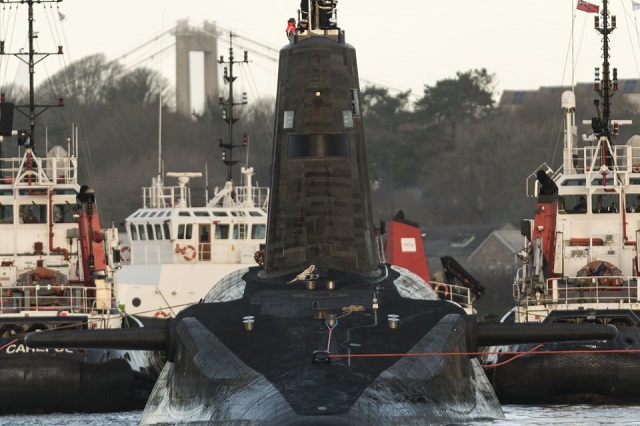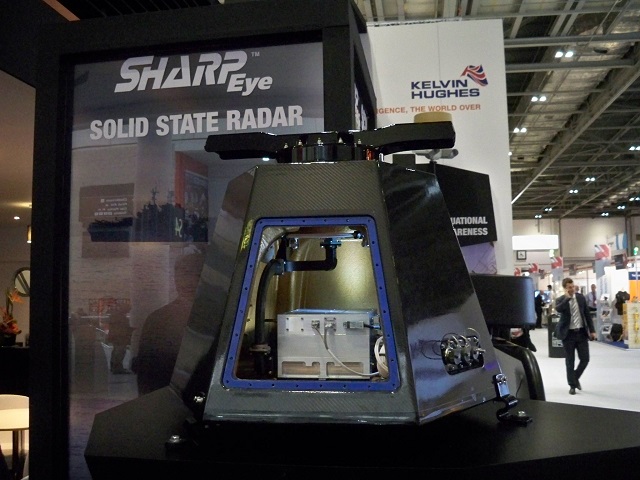 The Royal Navy's Type 23 will be fitted with the new navigation radar. Crown copyright. |
|||
The contract
also includes options for the introduction of the navigation radars to
future Royal Navy platforms such as the Queen Elizabeth Carriers, the
Type 26 Global Combat Ship, and Successor submarines. Defence Minister Philip Dunne said: The replacement of navigation radars across more than 60 ships, submarines and shore facilities will see the Royal Navy receive the latest generation of digital radar systems which set the standard for the future. This has been as a direct result of our pledge to invest £178 billion in defence equipment and support, to help to ensure the UK can respond to diverse threats around the world. |
|||
 The UK's nuclear deterrent Vanguard submarines will be fitted with the new navigation radar. Crown copyright. |
|||
Five shore
facilities will also benefit from the new technology which provides a
highly reliable and safe collision avoidance system. This includes equipment
for training at HMS Collingwood, in Hampshire, HMS Raleigh, in Cornwall,
and at the Land Based Test Site at Portsdown Technology Park in Hampshire. Head of Maritime Combat Systems at the MOD’s Defence, Equipment and Support Organisation, Steve Hyde, added: This contract will see new radars that use the latest technology rolled out across the entire Royal Navy fleet, providing a reliable, technically capable and easy to maintain system that will give our Navy the extra confidence they need when serving on operations. The contract with Lockheed Martin will cover the demonstration, manufacture and in-service support for the system, providing the optimal technically compliant solution and best value for money for the Royal Navy. It will sustain 14 jobs at Lockheed Martin’s Havant facility and create five additional roles in the company. |
|||
Kelvin Hughes SharpEye Solid-State Nav Radars to be Fitted on more than 60 Royal Navy Vessels
- Posted On











